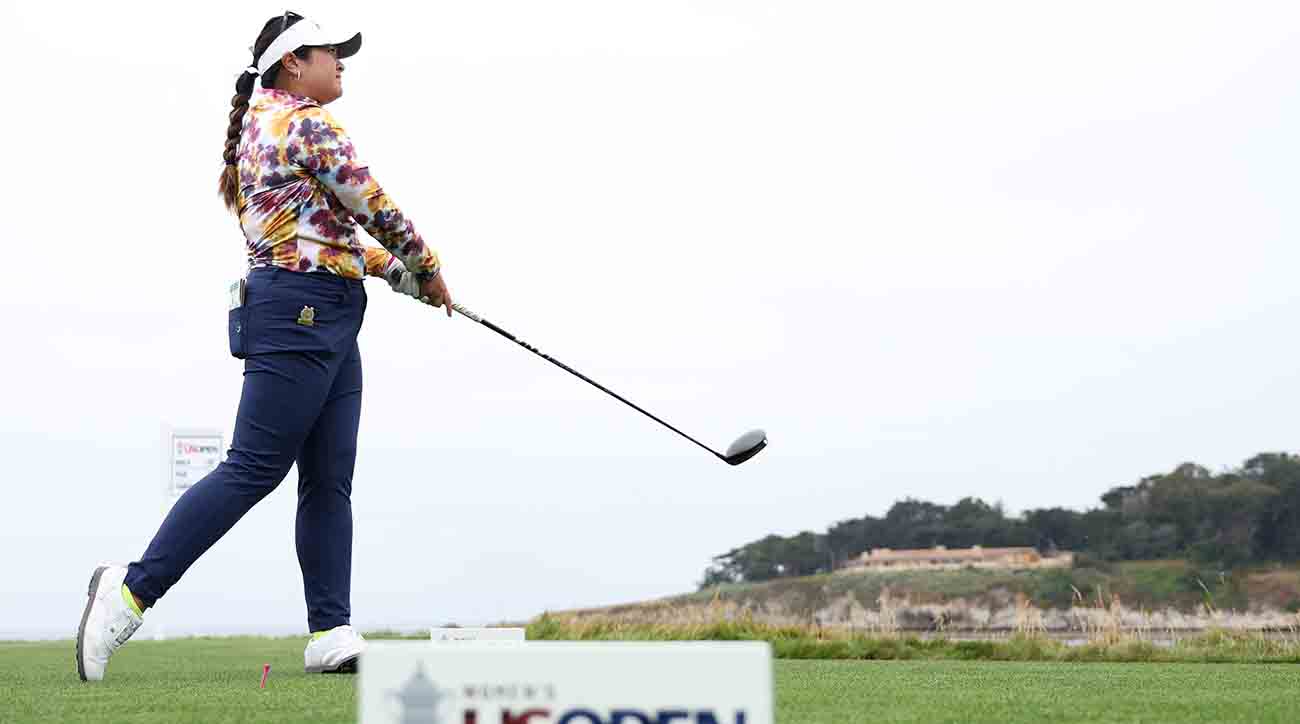USGA Announces Record $12 Million U.S. Women’s Open Purse

Lilia Vu’s eyes don’t widen at much in golf these days—she’s a two-time major champion, after all. But as USGA CEO Mike Whan delivered remarks about Ally Financial, his organization’s newest partner, the following list prompted the world No. 1 to instantly sit taller in her high-top chair.
“Listen to where [the U.S. Women’s Open] will be the next 10 years,” Whan said Thursday from a press event at Chelsea Piers in Manhattan. “Lancaster, Erin Hills, Riviera, Inverness, Oakmont, Pinehurst, Interlachen, Oakland Hills, Los Angeles Country Club, Chicago Golf Club and Merion. Find me a golf course that’s not in the top 100 in the U.S. or world.”
As an alum of UCLA, Vu was particularly enthused about the LACC stop—the host of last year’s U.S. Open on the men’s side. In general, the USGA’s effort to showcase LPGA talent on some of the golf’s most iconic venues is just one of the ways in which the organization is seeking to elevate the women’s game.

On Thursday, Whan and the USGA announced how they will be advancing that mission even further. Ally Financial, the Delaware-based bank holding company which already serves as a sponsor of the National Women’s Soccer League, is becoming an official USGA partner.
Ally becomes the presenting partner of the U.S. Women’s Open as well as the USGA’s new U.S. National Development Program. Thanks to Ally, the U.S. Women’s Open will boast a record $12 million purse for this year's tournament at Lancaster Country Club in Pennsylvania.
The bank’s signature purple logo will also appear on Vu and her caddie’s hats in 2024. Ally will sponsor the 26-year-old as she chases her third major championship and embarks on her fourth full LPGA season.
“It’s nice to see businesses like Ally take golf as seriously as we do, because we view our careers as basically businesses,” Vu says. “It’s really cool and really refreshing to see. The USGA does a great job with our U.S. Women’s Open. It feels like we have a record-breaking purse every year.”
Vu would be correct in that observation. The Ally partnership comes just a year after the USGA mutually ended its relationship with ProMedica, a nonprofit that helped to nearly double the U.S. Women’s Open purse in 2022 to $10 million. The USGA’s $11 million purse for the 2023 championship at Pebble Beach set another record, even without a replacement title sponsor. And now, with the addition of Ally, there a is a clear path for the continued growth and elevation of the U.S. Women’s Open.
With a 12-year tenure as the commissioner of the LPGA on his resume, Whan is more than aware of the influence the U.S. Women’s Open has on the women’s game as a whole. The marquee major championship continues to set the standard for purse growth, venue prestige and player hospitality on Tour. The U.S. Women’s Open is the only event on the LPGA calendar that doesn’t require the women to participate in a pro-am. All 156 players who qualify for the field make $8,000—even those who miss the cut.
“I said to the board of the LPGA, ‘[The USGA] will lead,’” Whan says. “Other than the CME Tour Championship, we hadn’t had somebody pushing everyone else for a while. And that’s what happens—you see LIV coming in. So when we took the U.S. Women’s Open purse from $5.5 million to $10 million, every major went up. When we announced Pebble Beach, every major went up. I have the sense that one of the things we do is push others to want to get close to our level, and that benefits everyone.”
Cash is flowing into golf on all fronts. Yesterday, the PGA Tour announced a $3 billion investment from Strategic Sports Group, a group of private American sports owners. The Tour also remains in negotiations with the Saudi Public Investment Fund for a deal that could finally unify the men’s game. Whan expects that one day the women will benefit from that type of influx as well—and he hopes they take advantage of it.
“Competition happens. Do I think that will at some point seep into women’s golf? Probably. And when all these billions get rolled up, someone’s going to want to get women’s golf involved. I hope it does. I hope it turns into a huge opportunity for them,” Whan says. “When I was commissioner of the LPGA, I felt like my responsibility was, if anyone in the world is going to spend $100 million in golf, I needed to get our fair share of it—or at least some piece of it. Not just Saudi—but if billions of dollars are coming into the game, I hope the LPGA gets its share of that.”
